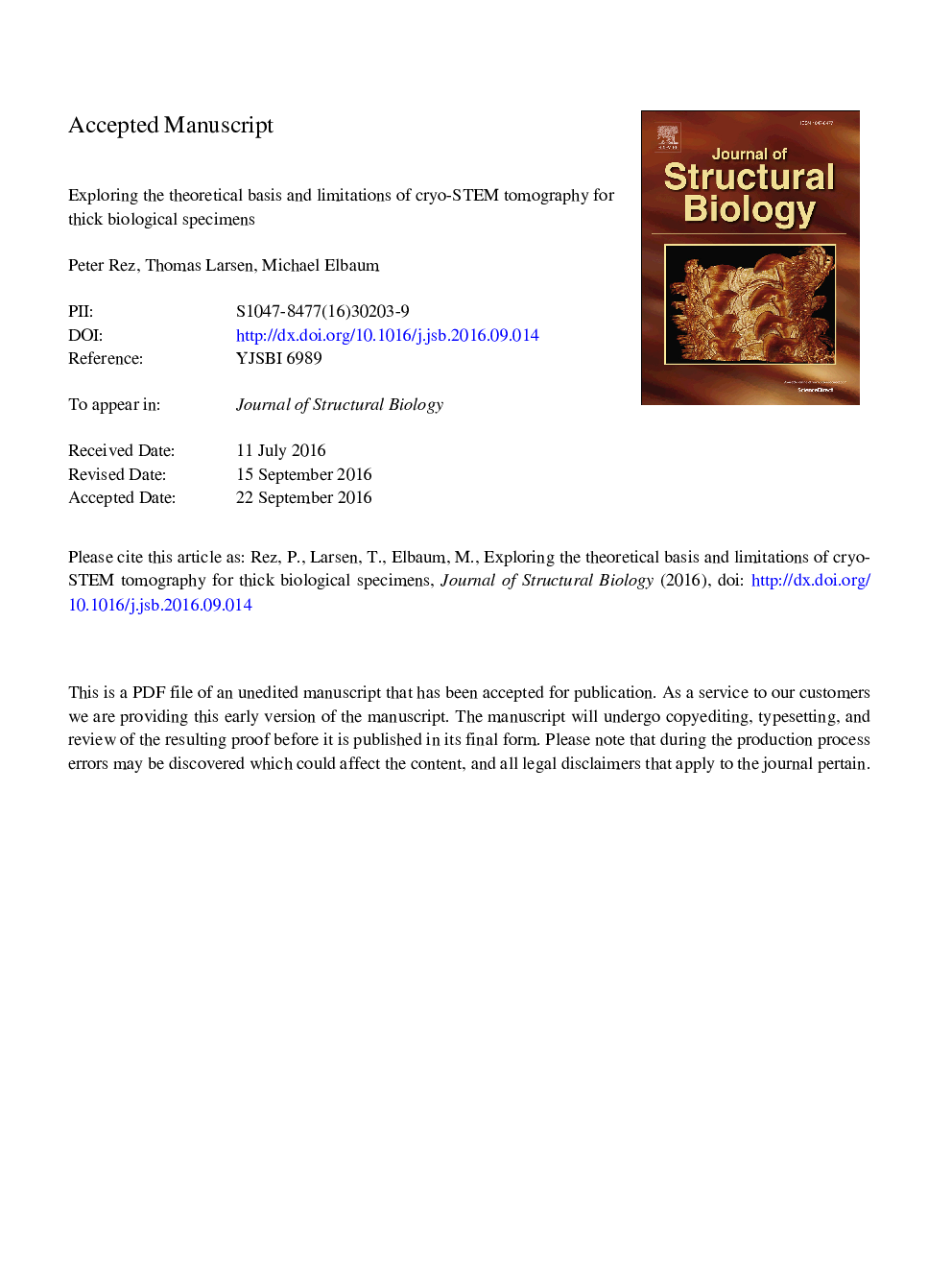| Article ID | Journal | Published Year | Pages | File Type |
|---|---|---|---|---|
| 5591663 | Journal of Structural Biology | 2016 | 34 Pages |
Abstract
Scanning transmission electron microscope (STEM) imaging has recently been applied to the cryo-tomography of thick biological specimens. As previously shown for plastic sections, STEM has a number of advantages for cryo-imaging compared to conventional wide-field TEM imaging. STEM is insensitive to phase coherence and is therefore suitable for much thicker specimens than TEM. Imaging in focus, with a long depth of field, also circumvents the complications of an oscillatory contrast transfer function and missing information at low spatial frequencies. Moreover the image signal represents a quantitative measurement of the electron scattering pixel by pixel, so that absolute intensities can be interpreted in terms of material properties in the specimen. Resolution, however, is undoubtedly compromised for thick samples, especially in the regime of multiple elastic scattering. In this work we address the specific issues that arise in cryo-tomography of thick biological specimens. We formulate an imaging model based on a Boltzmann transport equation, complemented by Monte Carlo simulations. Using these theoretical tools, we identify conditions for image acquisition that will be compatible with the basic presumption of tomographic reconstruction, i.e., that for a given composition the imaging signal varies monotonically with thickness. For optimal resolution, contrast, and signal strength, we propose to generalize the on-axis bright field detector to collect at angles well beyond the illumination cone. Our results justify the generation of 3D images for micron thicknesses and beyond.
Keywords
Related Topics
Life Sciences
Biochemistry, Genetics and Molecular Biology
Molecular Biology
Authors
Peter Rez, Thomas Larsen, Michael Elbaum,
